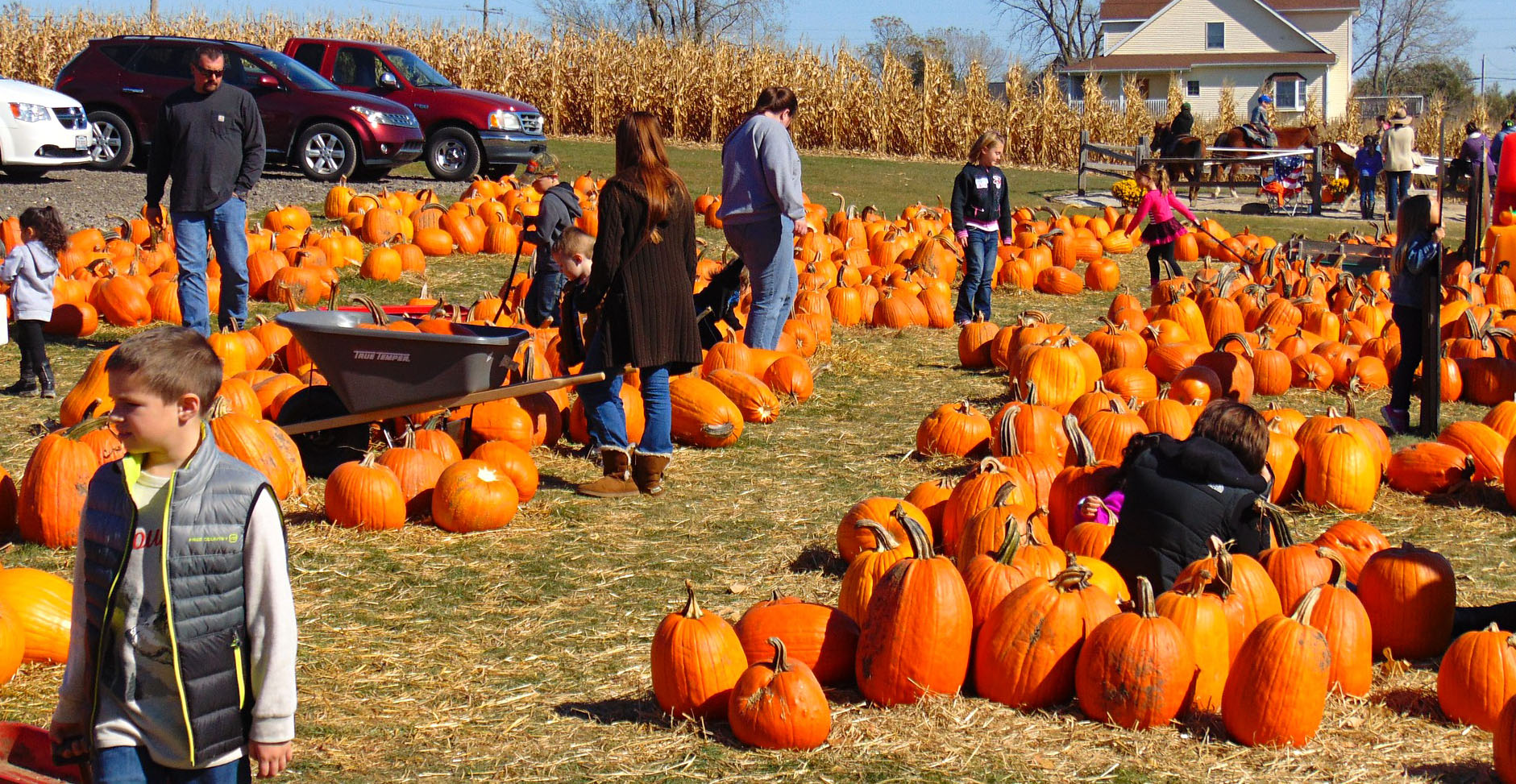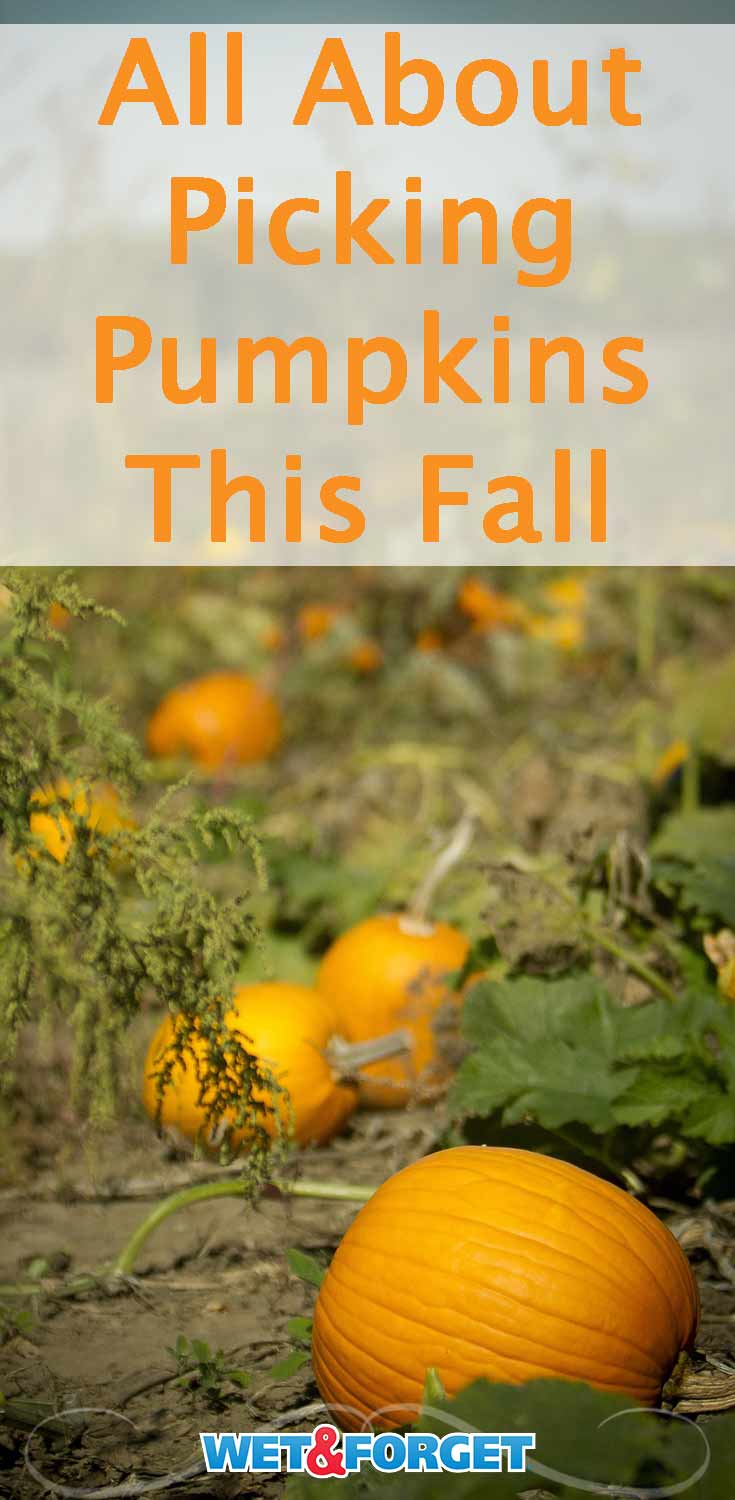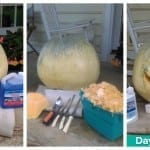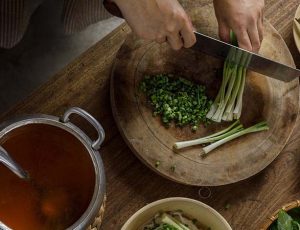
Pick the Best Pumpkin: How to Find the Right Pumpkin for Your Needs
One of fall’s fun activities is a trip to the pumpkin patch to pick the best pumpkin. When you find that perfect orb to fashion into a jack o’ lantern or to decorate your front porch, you’ll know that fall has arrived! Read on to get hints and tips on how to pick the best pumpkin for carving or cooking.
Before You Go
With the huge variety of pumpkin varieties, colors, shapes, and sizes available, it’s good to know what type of pumpkin you’re looking for before you visit. Are you looking to get a pumpkin to enhance your fall décor? To carve for Halloween? To make a pumpkin pie? There’s a pumpkin that’s perfect for each use.
Health Check
An easy way to check if a pumpkin is fresh is by tapping on the side with your knuckle. If you hear a slightly hollow sound, this means the pumpkin is fresh. The pumpkin may be past its prime if you hear a loud thud. Choosing a pumpkin that feels firm and heavy for its size is best. Make sure the stem is strong and solidly attached; signs of a healthy pumpkin. A pumpkin with a green stem has been recently harvested. A pumpkin that has been stressed because of a lack of water or nutrients may have a brittle, dry stem that easily breaks.
Check the pumpkin for cracks, wrinkles, cuts, or soft spots. If any of these are present, the pumpkin won’t last long. Flip the pumpkin over and press on the bottom with your thumb. If it gives or flexes, the pumpkin is no longer fresh. Choose one with an overall, even coloring, to pick the best pumpkin. A heavily mottled skin may mean decay.
Check the Pumpkin’s ‘Balance’
Place your potential winner on a flat surface. Is it a little tipsy? Press on the top and sides. Does it wobble? If so, the bottom may be uneven. Pick a pumpkin with a stable, flat base, especially if you plan to light the inside with a regular votive or tea candle.
Thick or Thin
The heavier the pumpkin, the thicker the walls. If you’re planning on carving a finely detailed Jack to greet trick-or-treaters, choose a smaller pumpkin as it will have thinner walls. Thinner walls allow more light to shine through. Save the larger pumpkins for more open designs requiring larger cuts.
Pumpkin Colors
Pumpkins are available in various colors, including the traditional orange, white, blue, red, pink, tan, and striped. Pick the best pumpkin for your desired use with our color guide below.
White
White pumpkins are popular because they provide a white ‘canvas’ for painted-on designs and faces. Some pumpkin enthusiasts prefer white pumpkins as the flesh is a light yellow, and the outer skin is a milky white. This creates an eerie glow when the pumpkin is lit within. White pumpkin varieties include Baby Boo, White Ghost, or Valenciano.
Blue
Striking and unusual, blue pumpkins stand out when mixed with their traditional bright orange or red cousins. Blue pumpkins are excellent cooking pumpkins. The flesh is mild and sweet, adding great flavor to sweet and savory dishes. Blue pumpkin varieties include Australian Blue, Jarrahdale, and Queensland Blue.
Tan
The khaki tan Musquee de Provence pumpkin originated in southern France. A large, squat, deeply ribbed fruit, it has a delicious, deep orange flesh that is popular with chefs. Other tan pumpkin varieties include Buckskin Kentucky and Dickinson Field.
For Good Eating, Pick a Plump One
Chubby is the top choice when selecting a cooking or pie pumpkin. The difference between a carving pumpkin and a cooking pumpkin is the flesh. The flesh of cooking pumpkins is finer-grained and sweeter than those of pumpkins grown for jack o’ lanterns. Whereas jack o’ lantern pumpkins are specifically bred for thick, firm rinds making for easier carving.
To pick the best pumpkin, choose one that feels heavy for its size. This means it will have more ‘meat’ or flesh. Plus, cooking pumpkins tend to get sweeter the longer they sit.
Preparing Fresh Pumpkin for Recipes
Fresh pumpkin can easily be frozen for later use in recipes. Here’s how:
- Remove the stringy pulp and seeds
- Cut the pumpkin into large chunks
- Bake in the oven until tender
- With a spoon, scrape the cooked flesh from the rind and into a bowl
- Use a potato masher to mash until it’s a smooth consistency and thoroughly
- Portion the pumpkin into plastic freezer bags, flatten the bags, and stack in the freezer
Now you’ll have fresh pumpkin ready for bread, pies, pancakes, and stews year-round.
Extra Tips:
Cooking Pumpkins vs. Carving Pumpkins
It’s been rumored that you can make a pie from a jack o’ lantern. But it’s not a good idea. Why? Pumpkins grown for jack ‘o lanterns are different than pie pumpkins. A pie made from a jack ‘o lantern is usually disappointing; stringy and bland tasting. And if you’ve had a burning candle inside, you might also detect a waxy or burned flavor!
Preserving Pumpkins
Don’t forget to preserve your pumpkin after carving! Carved pumpkins can easily rot without proper preservation. Coating your pumpkin in Wet & Forget Outdoor will preserve your pumpkin from mold and mildew growths for multiple weeks. Learn more on our blog post here.


















